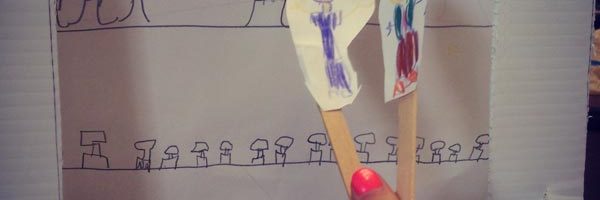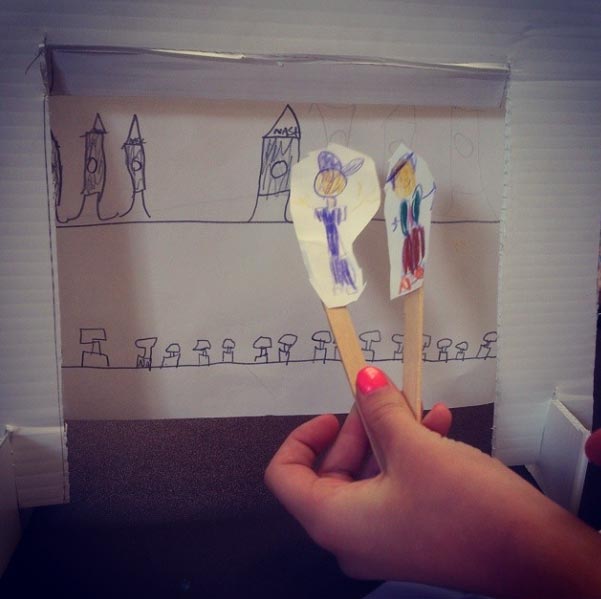Project Title: Portable Plays ( instructions for 2 hour class)
Description:Students create plays around a theme or topic, creating in-depth stories with backdrops and characters. A great way to introduce perseverance. Create a play about a character or characters that succeed with determination.
Project Ideas: perseverance, theater, body kinesthetic
Author: Candice
Grade level or Target Age Range: preschool to early elementary
Historical Art Examples or References:Show students a clip of a character that perseveres and ultimately overcomes a tough obstacle.
Storyline – children’s books read by famous individuals
Acting Exercises – acting exercises for kids
Vocabulary: characters, plot, set, script, stage, dialogue, back drop, scenery
Materials: glue, colored construction paper, white printer paper, cardboard sets, markers, crayons, scissors, colored pencils, Popsicle sticks, and tape
Anticipatory Set: Discuss the theme of perseverance in relation to the video clip. Did the character succeed in the end? how many obstacles did the character overcome?
Demo/Directions: (Roughly plan amount of time it takes to do each procedure)
- Anticipatory set. (10 minutes)
- Have students write a story. Make sure they include imaginative scenery and a minimum of three major characters. (15 to 20 minutes)
- Have students draw, color, cut out, and glue three characters onto Popsicle sticks. (20 to 25 minutes)
- Students can also create a few lines of dialogue for their characters. (10 minutes) (optional)
- Next, have students create 3-4 different backdrops for their cardboard stage.back drops can be changed by applying a strip of tape at the top of the page(20 to 25 minutes)
- Have students present their plays to each other in small groups. (25 – 30 minutes)
*Students may need more time in creating their backdrops or characters. Step 4 can be an optional step for students who finish other steps early.
Discussion: Life applications; how the lesson might apply to non-art related experiences or other types of knowledge.
- Is it important to address scenery when writing a story?
- What elements are important in making a good story?
Instructional Reflection: Which instructional tools or strategies interested or helped these students learn most? What additional techniques tools or materials could be used to better support student learning? What adaptions could be made to this lesson for students with different needs levels or skill sets?
- Depending on age level, creating dialogue may not work with pre-school students.


